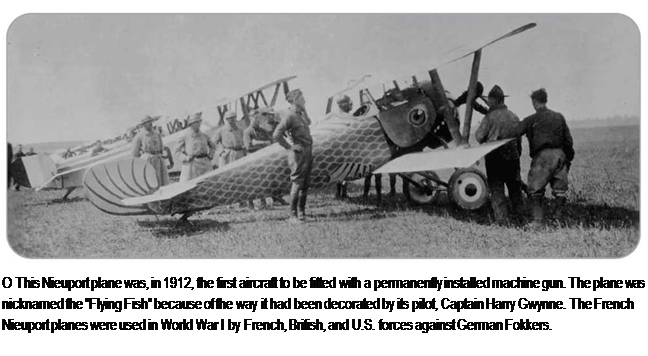Scout Planes
During the first months of the fighting in 1914, airplanes buzzed around the skies over the armies below, but pilots had little more to do than the obsolete

cavalry galloping over the fields. Planes were used to observe enemy movements, rather like aerial versions of cavalry scouts on horseback. When opposing pilots met in the air, they waved-at least at first. As the war became serious, they began exchanging shots, first with pistols and then with machine guns. Most planes were two-seater biplanes with a pilot and an observer. The observer did the “scouting” and fired the gun.
The machine gun was mounted high to prevent bullets from hitting the propeller. Another solution to this problem was to move the propeller, putting it and the engine behind the pilot. This produced “pusher” machines such as the Vickers FB5 Gunbus and the DH-2, one of a series of planes designed by British engineer Geoffrey De Havilland (1882— 1965). The weakness of the pusher was that it was exposed to attack from the
rear. To fire behind himself, the gunner had to stand on his seat and was at risk of falling out of the plane, with no parachute to save him. A device called an interrupter gear, which synchronized the firing of guns with the propeller, solved the propeller positioning problem.










